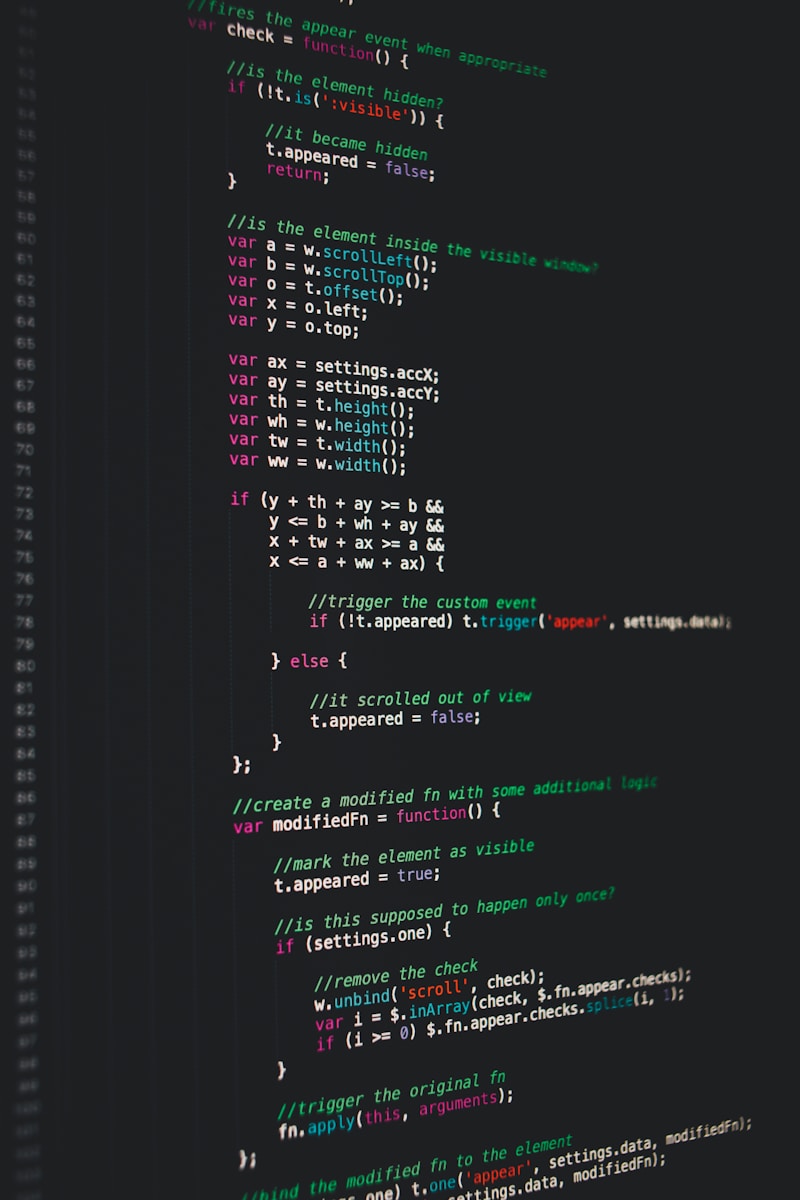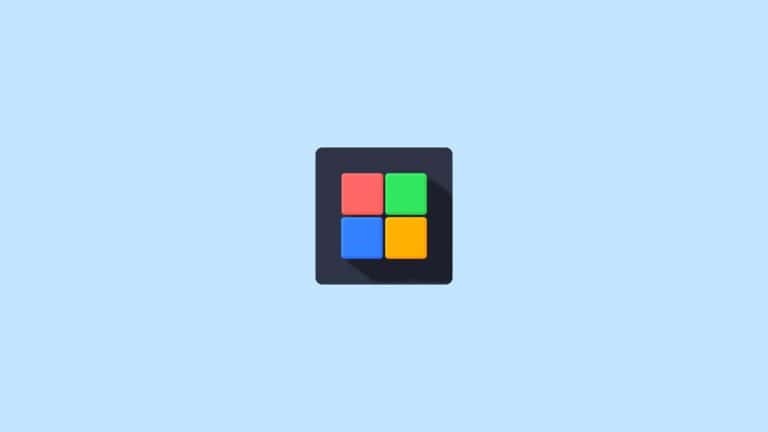
Decompilers are essential tools for software developers, security analysts, and reverse engineers who need to understand how programs work without access to the original source code. These specialized applications convert compiled machine code back into a readable format, making it possible to analyze software behavior, identify vulnerabilities, or recover lost code. When choosing the right decompiler, factors like supported languages, accuracy, and user interface become critical considerations.
The best decompilers offer a balance between powerful features and usability, with options like IDA Pro, Ghidra, and RetDec leading the field for professionals working with complex software analysis tasks. You’ll find that the right tool depends largely on your specific needs, whether you’re examining malware, patching legacy applications, or simply learning how certain software functions. Different decompilers excel at handling various programming languages and platforms, from mobile applications to desktop software.
1: IDA Pro
IDA Pro stands as one of the most powerful tools in the decompiler space. It’s widely considered the industry standard for code analysis and vulnerability research, combining a disassembler, debugger, and decompiler in one comprehensive package.
When you’re working with complex binaries, IDA Pro makes it easier to understand the underlying code. The tool transforms compiled programs back into a more readable representation, helping you see the original logic.
The Hex-Rays decompiler is a particularly valuable add-on for IDA Pro. This feature transforms assembly code into pseudo-C code that’s much easier to analyze, even for those who aren’t assembly experts.
IDA Pro supports an impressive range of processors. While the base product supports over 60 processor disassemblers, you can also access 11 specialized decompilers tailored to specific architectures.
The interface might seem complex at first, but it offers powerful functionality once you become familiar with it. Many security professionals consider this learning curve worthwhile for the capabilities you gain.
For those concerned about cost, it’s worth noting that IDA Free includes decompilers for x86 and x64 architectures. This gives you access to some of IDA’s functionality without the premium price tag.
IDA Pro also offers extensive plugin support, allowing you to extend its functionality. This makes it highly customizable for your specific reverse engineering needs.
2: Ghidra
Ghidra is a powerful free and open-source decompiler tool released by the NSA. You can use it for reverse engineering, analyzing code, and understanding how programs work without having access to the original source code.
One of the most impressive features of Ghidra is its ability to handle a wide variety of processor instruction sets and executable formats. This flexibility makes it useful for reverse engineering 16-bit DOS games and other legacy software that other tools can’t properly analyze.
The decompiler component is particularly noteworthy. Many developers and security researchers consider Ghidra’s decompiler to be freaking awesome due to its accuracy and readability. It transforms compiled machine code back into a higher-level language representation that’s easier to understand.
You’ll find Ghidra especially useful because it can be run in both interactive and automated modes. This flexibility lets you choose between hands-on analysis or batch processing of multiple files.
When comparing decompilers, many professionals place Ghidra alongside IDA Pro as one of the best tools for comprehensive binary analysis. While IDA Pro may have slightly better decompilation accuracy, Ghidra’s open-source nature makes it accessible to everyone.
Ghidra also offers a collaborative environment where multiple analysts can work on the same project. You can share findings, annotations, and analysis results with team members.
3: Binary Ninja
Binary Ninja is a powerful tool for reverse engineering that offers interactive decompilation, disassembly, debugging, and binary analysis. It was designed specifically by reverse engineers for reverse engineers.
You might find Binary Ninja easier to use than some alternatives. Some users prefer it over Ghidra because the interface feels more readable while offering similar features.
One of Binary Ninja’s strengths is its modern approach to reverse engineering. You can work with its interactive user interface or take advantage of the API for automation tasks.
The platform features a unique stack of intermediate languages for decompilation, which helps you better understand binary code. This multi-layered approach gives you different views of the same code.
Binary Ninja also offers a free, open-source web service called Decompiler Explorer. This tool lets you compare outputs from different decompilers when working with small executables.
The team continues to improve the platform. They recently worked on restructuring the decompiler, showing their commitment to enhancement.
You’ll appreciate the scriptable and extensible nature of Binary Ninja when handling complex reverse engineering tasks. Its flexibility makes it suitable for both beginners and experienced analysts.
4: Hopper Disassembler
Hopper Disassembler is a powerful tool designed for reverse engineering that helps you examine how applications work under the hood. This versatile software functions as a binary disassembler, decompiler, and debugger for both 32-bit and 64-bit executables.
When you’re working with unknown code, Hopper gives you the ability to break down compiled programs into more readable formats. You can load any binary file and immediately start analyzing its structure and behavior.
One of Hopper’s strengths is its user-friendly interface, making it accessible even if you’re relatively new to reverse engineering. The tool is particularly popular among Mac users, though versions exist for other platforms as well.
The decompiler functionality attempts to convert assembly code back into a higher-level language representation. While not perfect, it provides you with a helpful starting point for understanding program logic.
Many users find that Hopper offers an excellent balance of features for its price point. Though not as feature-rich as some enterprise-level tools, it matches many capabilities of more expensive alternatives.
When comparing Hopper to other tools, some engineers note that while it’s quite capable, certain competitors may have stronger decompilation features. Your specific needs will determine if Hopper is the right choice for your projects.
You’ll find Hopper particularly useful for software debugging, security research, and learning about application internals. Its ability to help you understand unfamiliar code makes it valuable for both educational and practical purposes.
5: Snowman
Snowman is a powerful native code to C/C++ decompiler that supports multiple architectures including x86, AMD64, and ARM. You can use it as either a standalone GUI application or a command-line tool to analyze compiled code.
One of the standout features of Snowman is its simplicity and ease of use. The interface is straightforward, making it accessible even if you’re new to decompilation tools.
The decompiler does an excellent job of identifying known C library and Windows function names, which is quite impressive for a free tool. This functionality helps you better understand the code you’re examining.
Snowman is also available as a plugin for x64dbg, enhancing this popular debugger with decompilation capabilities. This integration creates a more comprehensive reverse engineering environment.
If you’re looking for alternatives, tools like ILSpy, dnSpy, and Cutter offer similar functionality. Each has its own strengths depending on your specific needs.
It’s worth noting that Snowman is currently looking for a maintainer. This means development may not be as active as some other tools in this space.
Some users have suggested that future decompilers like Snowman could benefit from machine learning to better name variables and functions, which would be a valuable improvement to the decompilation process.
6: ILSpy
ILSpy stands out as a powerful open-source .NET decompiler that helps you examine and understand compiled .NET code. This free tool allows you to browse through assemblies and convert IL code back into readable C# or Visual Basic.
One of the notable features of ILSpy is its ability to decompile entire .NET assemblies, including DLLs and EXEs. You can easily navigate through namespaces, types, and members within the intuitive tree-view interface.
ILSpy has reached such a level of maturity that even Visual Studio itself relies on it to generate source code from .NET assemblies during debugging sessions. This speaks volumes about its reliability and accuracy.
The tool includes an “Open List” feature that many developers appreciate. This functionality lets you open a preconfigured list of assemblies you want to browse, saving you time when working with multiple related libraries.
You can download ILSpy from GitHub or the Microsoft Store if you prefer RTM versions. The GitHub repository offers both the latest releases and continuous integration builds for those who want the newest features.
For reverse engineering tasks, ILSpy proves invaluable when you need to understand how certain .NET applications work. Unlike some alternatives, you don’t necessarily need to decompile to a complete VS project to make use of its capabilities.
7: dnSpy
dnSpy stands out as a powerful tool in the .NET decompilation landscape. It functions as both a debugger and assembly editor, making it highly versatile for your development or reverse engineering tasks.
One of dnSpy’s main strengths is its ability to let you edit and debug assemblies even without access to source code. This capability is incredibly useful when you need to understand how a program works or fix issues in compiled code.
The tool features an attractive user interface with a default dark mode that many developers prefer. Its integrated debugger takes functionality to the next level, allowing you to attach to running processes and debug them without source code.
While dnSpy had slightly lower decompilation quality than some alternatives like ILSpy, it compensates with improved handling of obfuscated assemblies. This makes it more robust when working with protected code.
It’s worth noting that dnSpy has been archived on GitHub, which means active development has stopped. However, many developers still use it due to its comprehensive feature set.
You’ll find dnSpy particularly helpful for its feature-rich environment that supports not just viewing but also modifying .NET assemblies. This makes it an essential tool if you work extensively with .NET applications.
8: .NET Reflector
.NET Reflector is widely regarded as one of the leading decompilers for .NET applications. It allows you to see how APIs, libraries, frameworks, and 3rd party .NET code really work.
Developed by Red Gate Software, .NET Reflector gives you the ability to browse class hierarchies, inspect properties, and examine method bodies. You can also use it to find specific references within assemblies.
One notable feature is that it runs as a Visual Studio add-in, making it convenient to integrate into your development workflow. This allows you to examine third-party code without leaving your IDE.
The tool offers decompilation into multiple languages including C#, Visual Basic, and IL. This flexibility helps you work with code in the language you’re most comfortable with.
It’s worth noting that .NET Reflector was once free but is now a paid product. This change prompted the development of several free alternatives.
Despite being a commercial product, many developers find .NET Reflector worth the investment for its polished interface and reliable decompilation results. The code it produces is often cleaner and more readable than some free alternatives.
When dealing with complex .NET applications, .NET Reflector can save you significant time by helping you understand how libraries function without having to experiment through trial and error.
9: Hex-Rays Decompiler
Hex-Rays Decompiler is one of the most powerful tools in the reverse engineering field. It works as an add-on for IDA (Interactive Disassembler) and transforms complex machine code into readable C-like pseudocode. This makes understanding program functionality much faster than analyzing raw assembly code.
When you’re working with compiled binaries, Hex-Rays can save you countless hours of analysis time. The decompiler supports multiple processor architectures including x86, x64, ARM, and others depending on your license.
One of the standout features is its interactive operation. You can click on variables, rename them, and see those changes reflected immediately in the pseudocode. This intuitive interface makes it accessible even if you’re new to reverse engineering.
Hex-Rays offers both interactive and batch operation modes. The batch mode is particularly useful when you need to decompile multiple functions or entire programs automatically.
The decompiler receives regular updates that improve code output quality. Version comparisons show significant improvements between releases, with newer versions handling stack variables and complex code structures better than previous iterations.
While Hex-Rays isn’t free, professional analysts and security researchers consider it worth the investment. You can explore different licensing plans on their website to find one that fits your needs.
The learning curve might be steep initially, but the productivity gains make it indispensable for serious reverse engineering work.
10: x64dbg
x64dbg is a powerful open-source debugger for Windows that can handle both 32-bit and 64-bit applications. You might find it particularly useful as it provides a single interface for debugging different types of applications.
Unlike some other tools, x64dbg is regularly updated and maintained. It’s built on several open-source libraries including Qt, TitanEngine, Zydis, Yara, and Scylla which provide robust functionality.
Many reverse engineers consider x64dbg a modern alternative to OllyDBG. Some users describe it as their “go-to debugger” for everyday use.
While x64dbg itself is primarily a debugger, it has some decompilation capabilities. The project previously included Snowman decompiler integration, which could convert native code to C/C++ across multiple architectures.
You should note that x64dbg doesn’t have as many plugins available compared to some older tools. However, its active development and streamlined interface make it worth considering.
If you’re looking for alternatives with stronger decompilation features, tools like IDA or Ghidra might better suit your needs. These offer more comprehensive decompilation capabilities, though IDA is a paid solution while Ghidra is free.
Understanding Decompilation
Decompilation transforms compiled binary code back into a higher-level representation that resembles the original source code. This process helps you analyze software without access to source files and is essential for security research, legacy code maintenance, and malware analysis.
The Decompilation Process
The decompilation process begins when a program takes compiled binary code as input. First, the decompiler dissects the binary to identify code sections, data, and functions.
It then analyzes control flow by mapping jumps and branches to create a structured representation of the program logic. This step reconstructs loops, if-statements, and function calls.
Next, the decompiler transforms low-level machine instructions into intermediate representations. These are gradually elevated to higher-level constructs like variables and expressions.
Finally, the decompiler generates pseudocode or a programming language output that resembles human-written code. Modern decompilers present results in a form that developers can understand more easily than assembly code.
Challenges in Decompilation
Decompilation faces several significant obstacles. Compiler optimizations often remove or transform code in ways that make original logic difficult to recover. Variable names, comments, and data types are typically lost during compilation.
Control flow obfuscation techniques intentionally complicate decompilation by adding unnecessary jumps or disguising program structure. This makes reconstructing the original algorithms particularly challenging.
Different processor architectures require specialized handling. A decompiler must understand the unique instruction sets of each platform to produce accurate results.
Decompilation is inherently an art of abstraction, requiring educated guesses about developer intentions. Perfect recovery of source code is mathematically impossible in many cases.
Despite these challenges, modern decompilers have become increasingly sophisticated, helping you understand program behavior even with these limitations.
Legal Implications of Decompilation
Understanding the legal landscape surrounding decompilation is crucial for both software developers and users. The practice sits at the intersection of intellectual property law, licensing agreements, and ethical software use.
Intellectual Property Rights
Decompilation often creates a derived work protected by copyright. When you decompile software, you’re essentially creating a version of code that wasn’t intended to be viewed by users.
Most software is protected under copyright law, which gives creators exclusive rights to reproduce and modify their work. These rights can restrict your ability to legally decompile programs.
Many End User License Agreements (EULAs) specifically prohibit decompilation. Violating these terms could expose you to legal liability, even if the act of decompilation itself isn’t illegal.
Some jurisdictions provide exceptions for interoperability purposes. This means you might legally decompile software to create compatible programs or systems.
Ethical Considerations
While decompilation may be technically possible, the ethical implications deserve careful thought. Using decompiled code to create competing products raises serious ethical concerns about intellectual property theft.
Legitimate uses for decompilation do exist. These include:
- Recovering lost source code for software you own
- Security research and vulnerability testing
- Educational purposes to understand programming techniques
- Troubleshooting compatibility issues
When considering decompilation, always evaluate your intentions. Ask yourself if you’re adding value to the software ecosystem or merely seeking to appropriate others’ work.
Some software communities embrace open-source principles where code examination is encouraged. These communities operate under different ethical frameworks than proprietary software developers.
Frequently Asked Questions
Decompilers come with different features and capabilities that can significantly impact your reverse engineering projects. Many users have specific questions about which tools work best for their particular needs.
What are the advantages of using Ghidra for decompilation?
Ghidra stands out as one of the best free native decompiler tools available. Its main advantages include being completely free and open-source while offering features comparable to commercial alternatives.
Ghidra provides excellent multi-platform support, running on Windows, Linux, and macOS. You’ll appreciate its collaborative features that allow team-based reverse engineering projects.
The tool includes a powerful decompiler engine that converts machine code into readable C-like code. Its extensive scripting capabilities with Python and Java support let you automate repetitive tasks.
Which free decompiler is recommended for beginners?
For beginners entering the world of decompilation, Ghidra offers the best balance of capability and accessibility. Its user-friendly interface makes it easier to understand the basics of reverse engineering.
Boomerang is another free option worth considering. It’s open-source and can help you learn the fundamentals without a financial investment.
Snowman, while more limited than commercial options, provides a straightforward experience for those just starting out with simple decompilation tasks.
How does IDA Pro compare to other decompilers in terms of functionality?
IDA Pro remains the industry standard for professional decompilation work. It offers the most comprehensive set of features including advanced code analysis, multiple architecture support, and plugin capabilities.
Unlike most competitors, IDA Pro provides superior handling of complex code structures and better type reconstruction. Its interactive disassembler gives you more control over the analysis process.
The main drawback is its high price point, which puts it out of reach for hobbyists and smaller organizations. Many professionals consider it worth the investment for critical reverse engineering projects.
Can you suggest any reliable open-source reverse engineering tools?
Ghidra tops the list of reliable open-source reverse engineering tools, backed by the NSA and offering professional-grade features. It includes a powerful decompiler with support for numerous processor architectures.
Radare2 provides a command-line based approach to reverse engineering that’s highly customizable and scriptable. While it has a steeper learning curve, many professionals value its flexibility.
Binary Ninja Community Edition offers a limited but useful free version of their paid tool, giving you access to quality decompilation capabilities without cost.
What is considered the most effective .NET decompiler available?
.NET Reflector stands as one of the most effective .NET decompilers. It produces exceptionally readable C# or VB.NET code and integrates well with Visual Studio.
ILSpy offers a free and open-source alternative that provides high-quality decompilation for .NET assemblies. You’ll find it handles most .NET code effectively while costing nothing.
JetBrains dotPeek provides excellent decompilation with the added benefit of integration with other JetBrains tools. IDEA’s built-in decompiler similarly offers great functionality for Java code.
Is there a decompiler that integrates well with x64dbg for enhanced analysis?
Snowman integrates particularly well with x64dbg through a plugin system that allows you to view decompiled code while debugging. This combination gives you both runtime and static analysis capabilities.
The x64dbg ScyllaHide plugin works with several decompilers to provide enhanced anti-anti-debugging features during your analysis. This helps when working with protected software.
RetDec can also be configured to work alongside x64dbg, though the integration requires more setup than built-in solutions. The combination provides powerful analysis capabilities for complex reverse engineering tasks.






